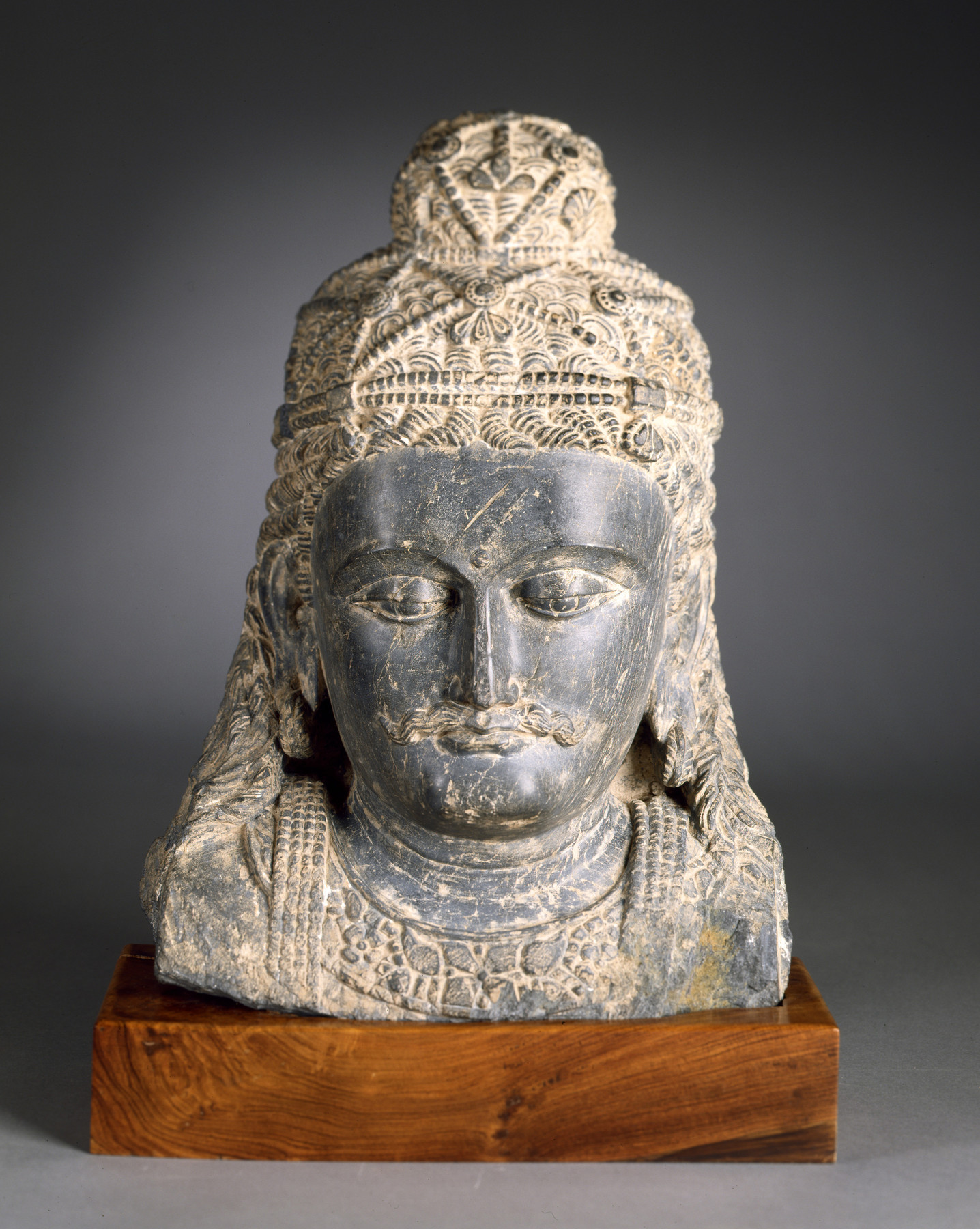Bodhisattva
(India, Nepal, and Tibet)
The elaborate jewelry and distinctive hairstyle identify this figure as a bodhisattva, an individual who has achieved Buddhist enlightenment but has yet to enter nirvana. The jewelry is meant to recall the life of Prince Siddhartha, who would become the earthly Buddha during the 6th century BC. This image may represent the Bodhisattva Maitreya who will become the next earthly Buddha. The region where this sculpture was created had fallen under the control of Alexander the Great during his conquest in the 4th century BC, and the sculptors there were greatly influenced by Greco-Roman artistic traditions.
Provenance
Provenance (from the French provenir, 'to come from/forth') is the chronology of the ownership, custody, or location of a historical object. Learn more about provenance at the Walters.
Walter Shurkin, Albuquerque, 1966; purchased by John and Berthe Ford, Baltimore, March 9 1981; given to Walters Art Museum, 2011.
Exhibitions
| 2001-2003 | Desire and Devotion: Art from India, Nepal, and Tibet in the John and Berthe Ford Collection. The Walters Art Museum, Baltimore; Santa Barbara Museum of Art, Santa Barbara; Albuquerque Museum, Albuquerque; Birmingham Museum of Art, Birmingham; Hong Kong Museum of Art, Hong Kong. |
Geographies
Pakistan (Gandhara) (Place of Origin)
Measurements
Object only H: 21 1/2 × W: 16 × D:10 in. (54.61 × 40.64 × 25.4 cm); Object with base H: 25 1/2 × W: 17 3/4 × D: 7 1/4 in. (64.77 × 45.09 × 18.42 cm); Base only H: 3 1/2 × W: 17 3/4 × D: 7 1/4 in. (8.89 × 45.09 × 18.42 cm)
Credit Line
Gift of John and Berthe Ford, 2011
Location in Museum
Not on view
Accession Number
In libraries, galleries, museums, and archives, an accession number is a unique identifier assigned to each object in the collection.
In libraries, galleries, museums, and archives, an accession number is a unique identifier assigned to each object in the collection.
25.265


